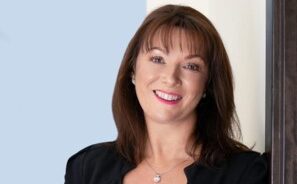Generous reliefs for business owners
Sebastien located two lasting powers of attorney, one for financial decisions and one for health and care decisions, under which Jane had appointed him as her attorney and expressly allowed him to give or refuse consent to life-sustaining treatment.
The hospital requested a meeting to discuss Jane’s continuing treatment. Sebastien asked Peter to attend the meeting and told him that Jane had made a will under which, if at the time of her death she had no children and still owned shares in EW Ltd these would pass to Peter with the remainder of her estate passing to Sebastien.
Sebastien and Peter knew they had to separate what they wanted (as best for them) from what would objectively be in Jane’s best interests but after hearing the medical advice, that Jane was virtually brain dead and unlikely to recover, all those present at the meeting agreed that it was not in Jane’s best interests to keep her alive artificially on life support any longer.
No inheritance tax was due following Jane’s death since the shares in EW Ltd qualified for 100% business property relief, and the rest of her estate passed to Sebastien. Although generally transfers between spouses are exempt from inheritance tax, where the surviving spouse is not domiciled in the UK, the spouse exemption is limited to an amount equal to the general nil-rate band (currently £325,000) unless the surviving spouse elects to be treated as being UK domiciled. Sebastien, who was domiciled in France, decided to make the election as this saved him 40% of inheritance tax on the value of Jane’s assets passing to him in excess of £650,000 (the general nil-rate band of £325,000 + the non-dom spouse allowance of £325,000).
The UK offers generous tax reliefs to business owners, either full exemption (Business Property Relief for inheritance tax) or a reduced rate of tax (Entrepreneurs’ or Investors’ Relief for capital gains tax), but in all cases the relevant qualifying criteria must be met.
Peter had previously invested £100,000 in a small fintech start-up. The company had been successful and was looking to raise more capital to enable it to grow further. Peter decided not to invest any more money himself and soon after the new investors had begun to influence the direction of the company, he decided it was time for him to realise his investment.
The other shareholders offered Peter £200,000 for his shares. Peter expected his gain of £100,000 to qualify for Entrepreneur’s Relief so that it would be taxed at a rate of 10% rather than 28%.
Key points for advisers – entrepreneurs’ relief
To qualify for Entrepreneur’s Relief on a disposal of shares in a company which gives rise to a charge to capital gains tax by an individual, throughout the twelve months prior to disposal:
- the company must have been the individual’s personal company – one in which the individual holds at least 5% of the company’s ordinary share capital that gives at least 5% of the votes; and
- the company must have been a trading company or the holding company of a trading company; and
- the individual must have been an officer or employee of the company.
Sole shareholder
Peter believed he satisfied all three conditions: more than 12 months ago he had acquired 10% of the company’s shares and voting rights (albeit this reduced to 7% when the new shares were issued to the new investors,) the company had been a trading company and he had been a director.
When Peter’s accountant prepared his claim for Entrepreneur’s Relief, he noted that Peter had been issued with 1,000 ordinary shares, which then represented 10% of the voting rights and of the issued shares of the company.
However, after the new shares had been issued, because these had a higher nominal value, although Peter owned 7% of the total number of shares issued by the company as well as 7% of the voting rights, his shares then represented less than 5% of the total nominal value of the ordinary share capital.
As his accountant explained, it was the nominal value of the ordinary share capital which was used by HMRC for the purposes of calculating whether an individual held at least 5% of the company’s issued share capital.
As at the time of the sale, Peter owned less than 5% of the nominal capital of the capital, he did not qualify for Entrepreneur’s Relief and he would have to pay capital gains tax on his gain at the higher 28% rate rather than 10%. Had Peter sold his shares before the new shares were issued then he would have qualified for the lower rate.
Peter resolved that he would stick to running EW Ltd, especially now that he was the sole shareholder, and that he should think about starting a family for him to pass it on to.
Click here to go to part 4 of the Warringtons articles and also access the others in the series.




